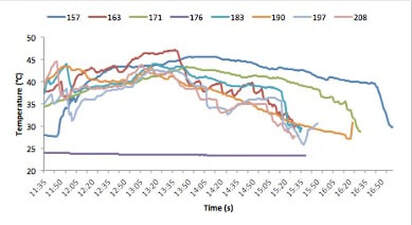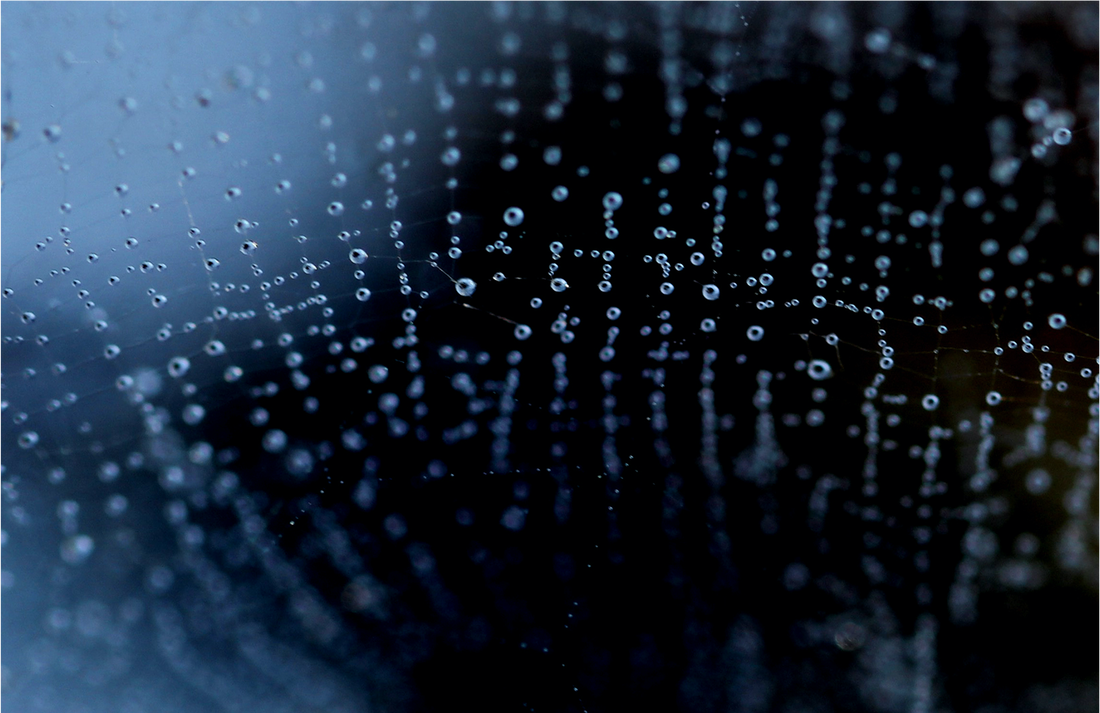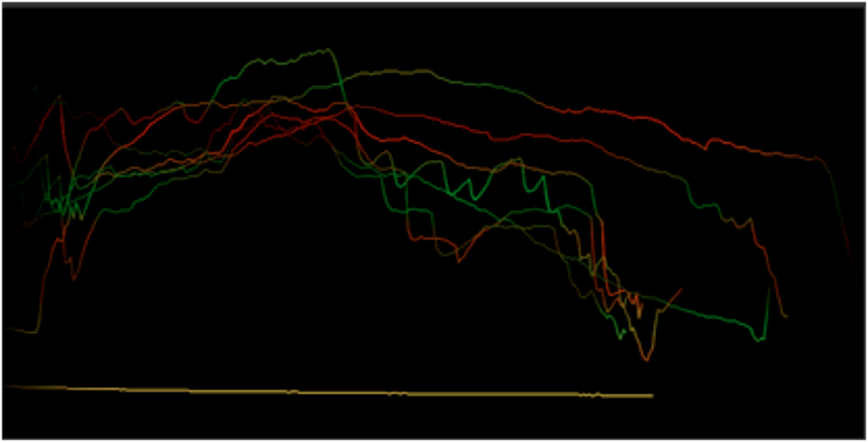I have found Metasynth fantastic for enabling the translation of different types of information into sound- "sonification". The following two examples illustrate just two approaches. In Algae Data, numerical data is displayed as a visual graph which is then used to generate or affect sound. In We notice Raindrops as they fall, a natural phenomenon ,rain falling on a hard surface is analysed at a granular or intensely slowed down speed and gentle rhythms and interesting melodic patterns are revealed.
|
Visual abstraction, and simulation of close up view of raindrops as if viewed from the perspective of a raindrop- actually based on photo of droplets of frost melting on an insects web…combined with digital modelling of imagined raindrops.
|
“Algae Data Music” ( P.Fletcher,J. Clark, 2015). was a sonification experiment mapping scientific data to sound. Data of sea temperature changes was translated into musical pitches and animation created in response to the overall theme and flow of this resulting music. Jennifer Clark's scientific work involved, looking at “how climate change will affect the resilience of an intertidal macroalgae (or seaweed) to increasing temperatures.” More of the science and philosophy is explained, or at least discussed, in this interview page with "Living Data" director Lisa Roberts here. We Notice Raindrops as they fall (Fletcher,Pollard,2016) basic phone recording of rain on bitumen:
:converted to sonogram in Metasynth and played with percussion samples-cowbell etc
Mapped to Metasynth Celeste multi-sampler instrument:
|
Graph of Mean Median Maximum and Minimum temperatures of Ocean Subhabitat:

Graph rendered on black background in Metasynth. Green to red indicates stereo placement -used to created a back and forth drifting in timbre, pitch, volume something like ocean currents.
The rhythm and frequency of rain drops were translated as a musical phrase or melody and as inspiration for animation in a work. final composition- Mark Pollard /Paul Fletcher |

